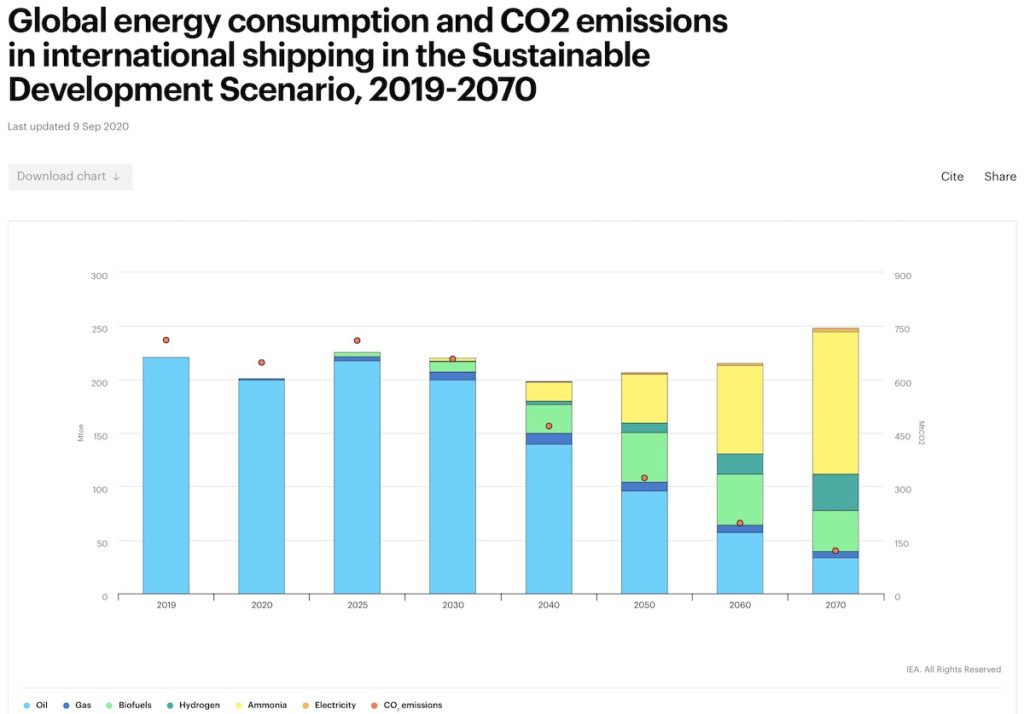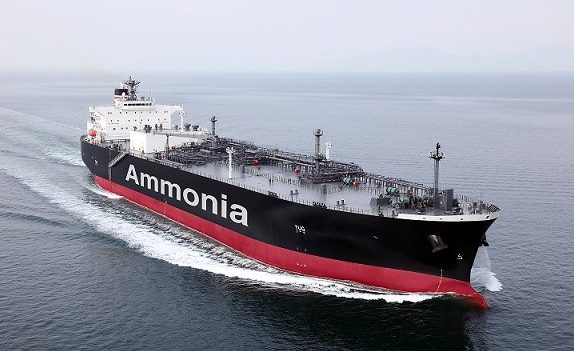The International Energy Agency has released a new long-term energy transition forecast, drilling down into individual industrial sectors, with ammonia touted to be a long-term winner in today’s battle for shipping fuel supremacy, reports Sam Chambers in his online Splash daily newsletter.
The IEA’s new report, Energy Technology Perspectives 2020, suggests that in global shipping, biofuels, ammonia and hydrogen will meet more than 80% of fuel needs in 2070, using around 13% of the world’s hydrogen production, with ammonia the clear leader.
Class society DNV GL has published its own fuel mix predictions through to 2050 this week with the launch of its own Energy Transition 2020 report. The Norwegian firm reckons shipping’s fuel mix in 2050 will switch from being almost entirely oil dominated today, to a mix dominated by low- and/or zero carbon fuels (60%) and natural gas (30%, mostly LNG), supported by a host of successful, regionally imposed, decarbonisation efforts. The low-carbon fuels outlined in the DNV GL report are a mixture of ammonia, hydrogen, and other electrofuels such as e-methanol.
Speaking at the launch of the class report on Wednesday, Andreas Sohmen-Pao, chairman of Singapore’s BW Group, one of the world’s largest shipowners, said his company is looking at methanol, biofuels and ammonia on its path towards decarbonisation.
Likewise, 11 months ago another shipping giant, Maersk, in its own bid to lead shipping towards decarbonisation, revealed it had identified three fuels to focus on – namely alcohol, biogas and ammonia.
A report published last month by Alfa Laval, Hafnia, Haldor Topsoe, Vestas and Siemens Gamesa suggested that renewable ammonia could power 30% of the global maritime fleet by 2050.
General observations
With global carbon emissions at unacceptably high levels, structural changes to the energy system are required to achieve the rapid and lasting decline in emissions called for by the world’s shared climate targets, the IEA report notes. It analyzes more than 800 different technology options to assess what would need to happen to reach net-zero emissions by 2070 while ensuring a resilient and secure energy system.
The report finds that transitioning just the power sector to clean energy would get the world only one-third of the way to net-zero emissions. Completing the journey will require devoting far more attention to the transport, industry and buildings sectors, which today account for about 55% of CO2 emissions from the energy system. Much greater use of electricity in these sectors – for powering electric vehicles, recycling metals, heating buildings and many other tasks – can make the single largest contribution to reaching net-zero emissions, according to the report, although many more technologies will be needed.
“This new IEA report not only shows the scale of the challenge but also offers vital guidance for overcoming it,” said Dr Fatih Birol, the IEA’s Executive Director.
“Solar is leading renewables to new heights in markets across the globe, ultralow interest rates can help finance a growing number of clean energy projects, more governments and companies are throwing their weight behind these critical technologies, and all-important energy innovation may be about to take off,” Dr Birol said. “However, we need even more countries and businesses to get on board, we need to redouble efforts to bring energy access to all those who currently lack it, and we need to tackle emissions from the vast amounts of existing energy infrastructure in use worldwide that threaten to put our shared goals out of reach.”






